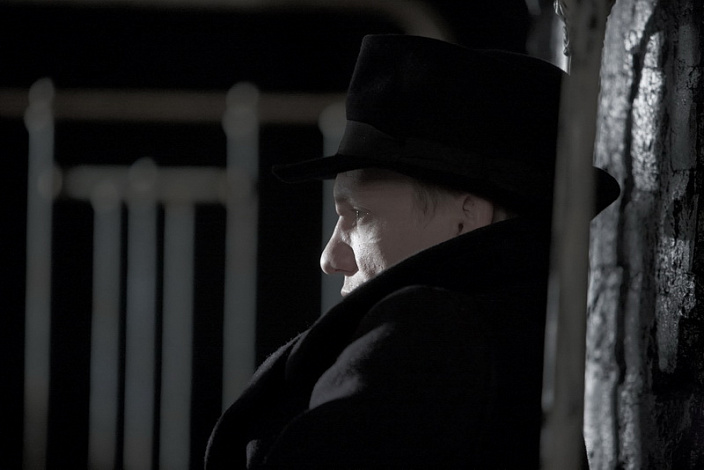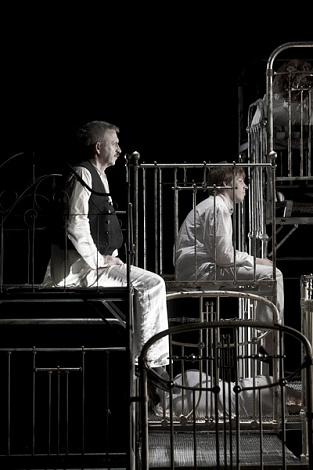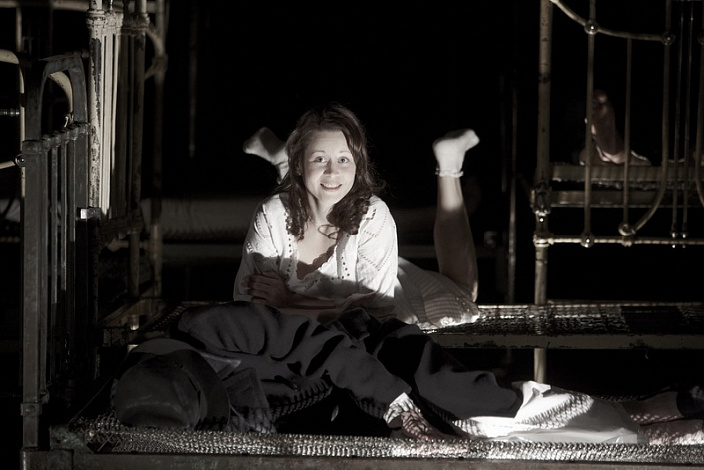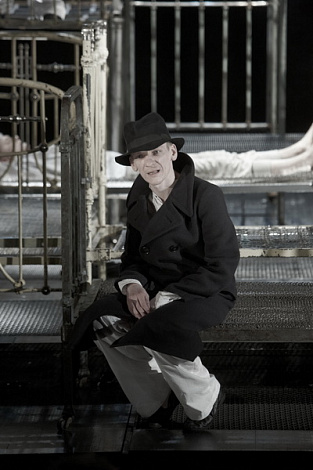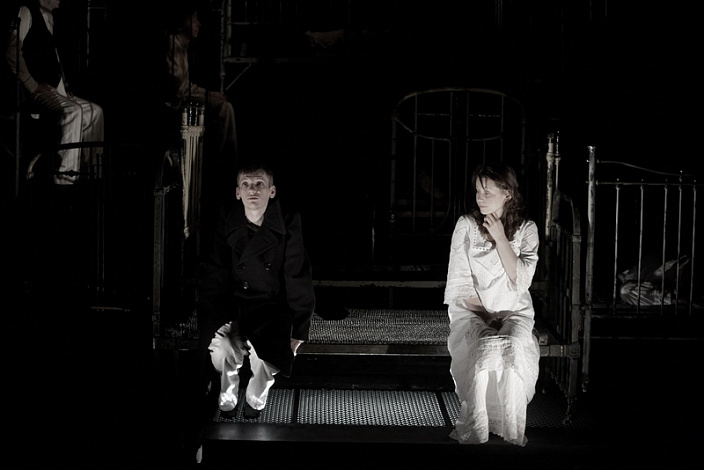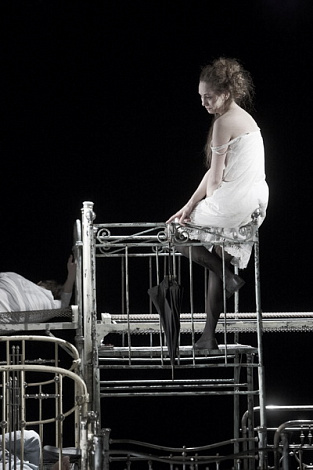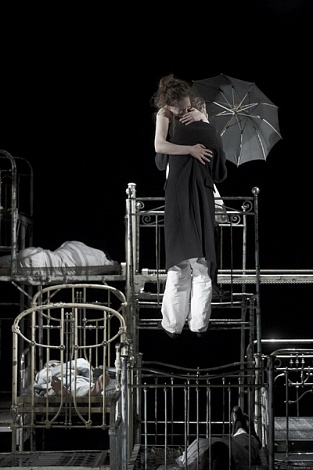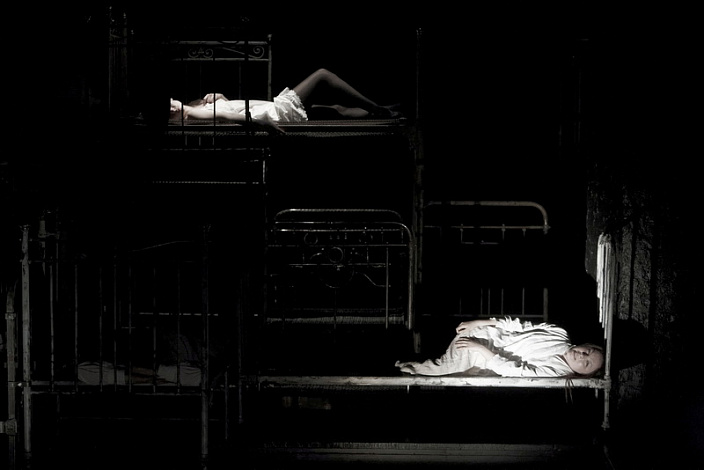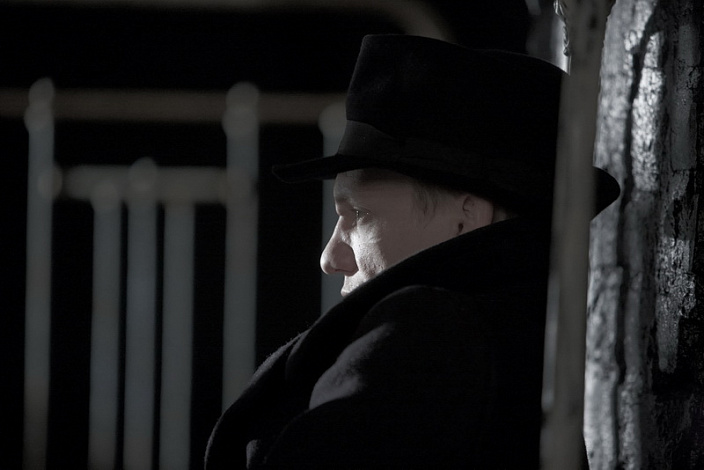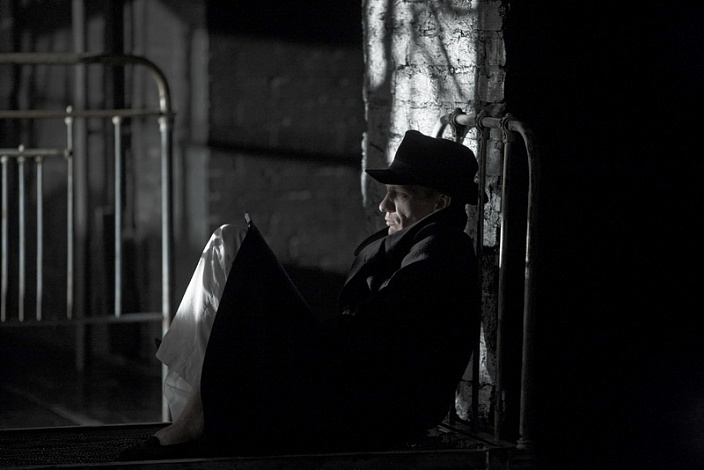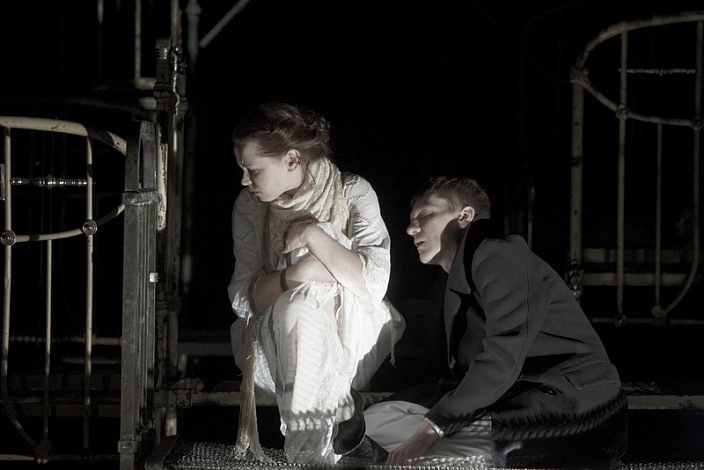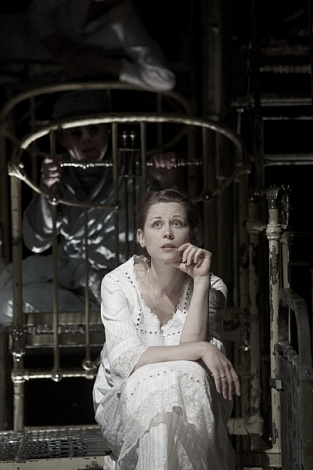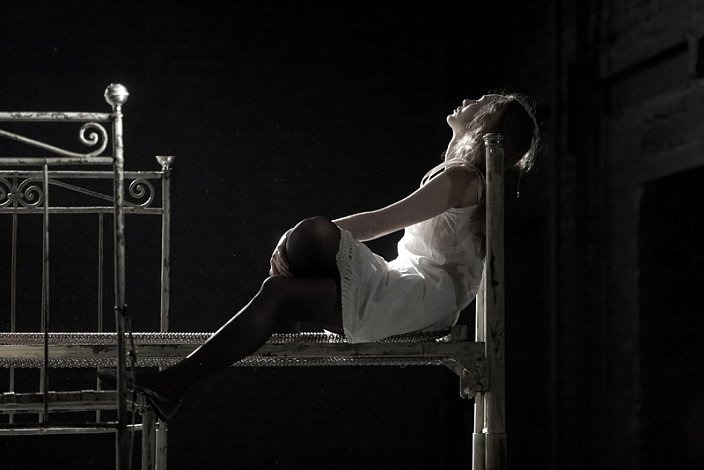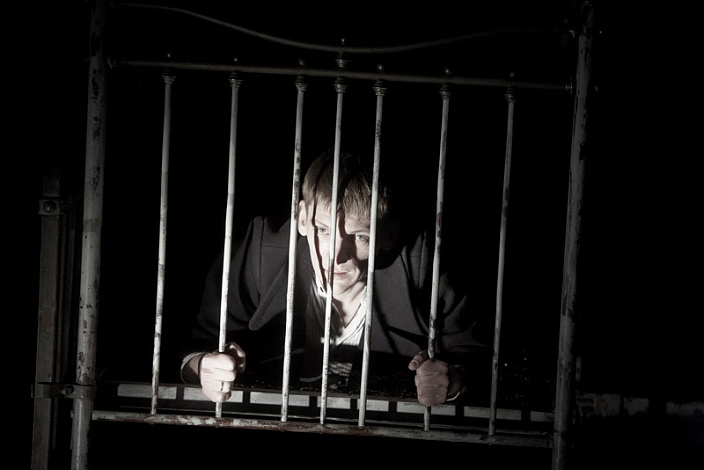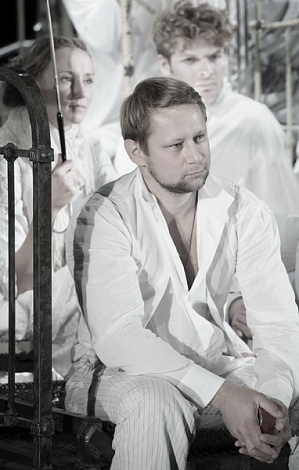"The Three Years” was the first story Chekhov wrote after the trip to Sakhalin that was followed by the major turnaround in his perception of life. The landmark text that became the meeting place of everything Chekhov wrote before and everything he would write afterwards.
Sergei Zhenovach
As part of the work on the play the actors and the production team visited Chekhov’s native city of Taganrog. They went to see his father’s store and the classical school where he studied and the theatre where he go to at nights under the veil of secrecy.
The story of the ‘sucked off wings’, futile hopes and abortive dreams is related by the director with exceptional scenic grace. Designer Alexander Borovsky crammed the stage with piles of iron beds, a reference and an act of respect to Lev Dodin’s Moscow Quire, and the precise image of the congested existential space where people keep bumping around, obstruct and trample down on each other. The light play (designer Damir Ismagilov) helps turn these metal structures into an openwork musical instrument where the characters sitting on shelves look like notes on a music paper. And the anguish, mess and confusion of the earthly existence are transformed into a celestial melody of love and happiness.
Olga Yegoshina, «Novye Izvestia»
Using a very simple material Chekhov and in the following of him Zhenovach don’t resolve (which is impossible) but just raise the fundamental questions of whether it is possible to live in the absence of love or to break away from the captivity of the everyday routine, of what is belief and what is unbelief, what is ethics and what is dishonor, what is will and what is lack of will and ultimately what is the true meaning of Christianity. <...>
The acting space is the same but throughout the play it is perceived in different ways: now it is a doss- ouse that Laptev was dreaming to build and then it is a prison cell or a hospital ward. The interplay of lights creates streets of the town and bridge railings, flights of steps and graveyard fencings. Essentially the space represents the cemetery of human illusions. <...>As seen by Zhenovach the darkest stories get filled with light. In his production the characters go through sufferings that lead to patience and humility. The director teaches his actors not to judge those they play, but to understand and forgive them. It’s all about what Yulenka talks of in the final scene – about mercy
Marina Timasheva, Radio Svoboda
As is typical of him, Zhenovach follow the author’s text, making it the key means of expression. The text stiffens “The Three Years”, which is kind of unusual for Zhenovach’s studio and his directorial style. One of Zhenovach’s most favored motifs is to prove that happiness is possible within a single and separate company of people. The atmosphere of happiness is strongly present in the director’s only previous Chekhovian production (in the early 1990-s he staged the comedy “The Wood Goblin” at the Malaya Bronnaya Theatre). The loveliness and tenderness that typify the Studio’s style are only flying flashes in the new work.
Olga Romantsova, «Gazeta»
